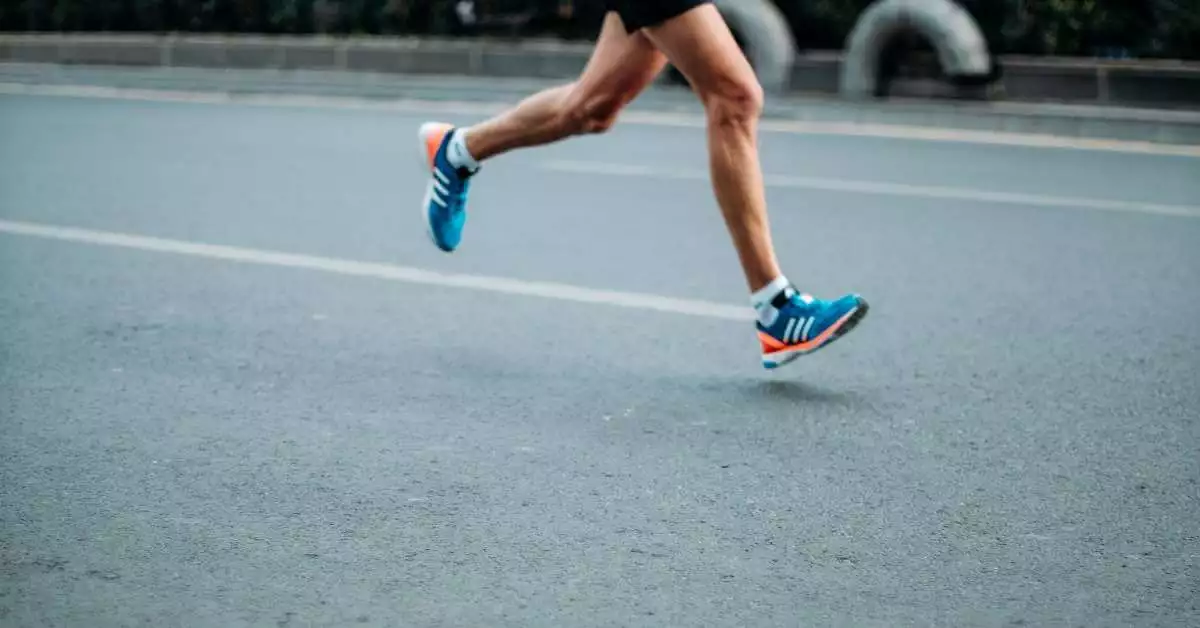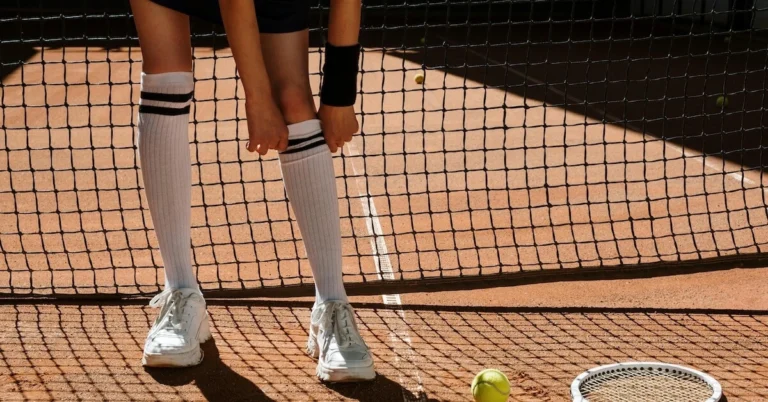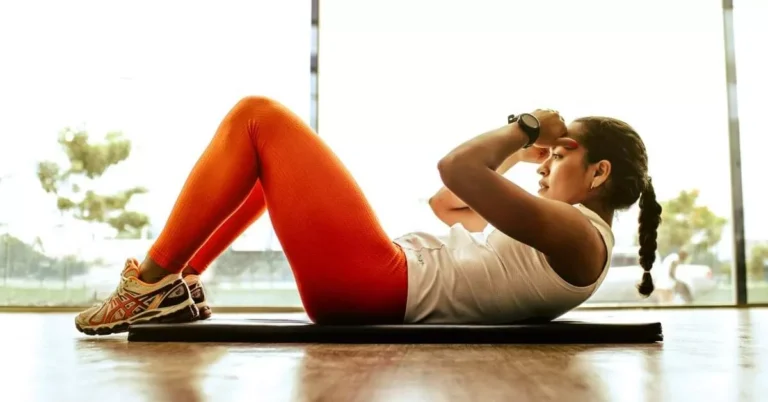If you’re a runner who’s considering using tennis shoes for running, you’re probably wondering if they’re a good option. Tennis shoes and running shoes may look similar, but they’re designed for different purposes. While running shoes are built to support forward movement, tennis shoes are designed for lateral movement. So, are tennis shoes good for running?
The short answer is no. Tennis shoes are not designed for running and are not recommended for running. Running shoes are designed to provide the necessary support and cushioning for forward movement, while tennis shoes are designed to provide support and stability for lateral movement. Running shoes also typically have more cushioning in the heel and forefoot to absorb the impact of running, while tennis shoes have a flatter sole to provide stability for quick lateral movements.
While you may be able to use tennis shoes for short runs or casual jogs, it’s not recommended for serious runners or long-distance running. Wearing the wrong shoes can lead to injuries, such as shin splints, plantar fasciitis, and knee pain. If you’re serious about running, investing in a good pair of running shoes is essential to prevent injuries and improve your performance.
Pro:
✅ best all-rounder ✅ stability ✅ high support
Con:
❌ not the widest
Are Tennis Shoes Good for Running: Understanding Tennis Shoes and Running Shoes
When it comes to choosing the right footwear for your workout, it’s important to understand the differences between tennis shoes and running shoes. While they may look similar, the design and anatomy of these shoes are quite different.
Anatomy of Running Shoes
Running shoes are designed to provide cushioning and support for your feet while you run. They typically have a thicker sole than tennis shoes, with more cushioning in the heel to absorb the impact of each stride. The upper part of the shoe is made of breathable mesh to keep your feet cool and dry.
The anatomy of a running shoe includes:
- Heel counter: This is the part of the shoe that wraps around the heel to provide stability and support.
- Midsole: This is the layer of foam between the outsole and the upper that provides cushioning and support.
- Outsole: This is the bottom of the shoe that comes into contact with the ground.
- Toe box: This is the front part of the shoe that provides room for your toes to move.
Anatomy of Tennis Shoes
Tennis shoes are designed to provide stability and support for your feet while you play. They typically have a thinner sole than running shoes, with more support in the midfoot to help you move side-to-side on the court. The upper part of the shoe is made of durable materials to withstand the wear and tear of the court.
The anatomy of a tennis shoe includes:
- Toe cap: This is the reinforced part of the shoe that protects your toes from impact.
- Midfoot shank: This is the stiff part of the shoe that provides support for your arch.
- Outsole: This is the bottom of the shoe that comes into contact with the court.
- Upper: This is the part of the shoe that covers your foot and provides support and stability.
Design Differences
The design differences between running shoes and tennis shoes are significant. Running shoes are designed to provide cushioning and support for your feet while you run, while tennis shoes are designed to provide stability and support for your feet while you play.
Running shoes are typically lighter and more flexible than tennis shoes, with a focus on cushioning and shock absorption. Tennis shoes are heavier and more rigid, with a focus on stability and support.
Are Tennis Shoes Good for Running: Functionality of Tennis Shoes
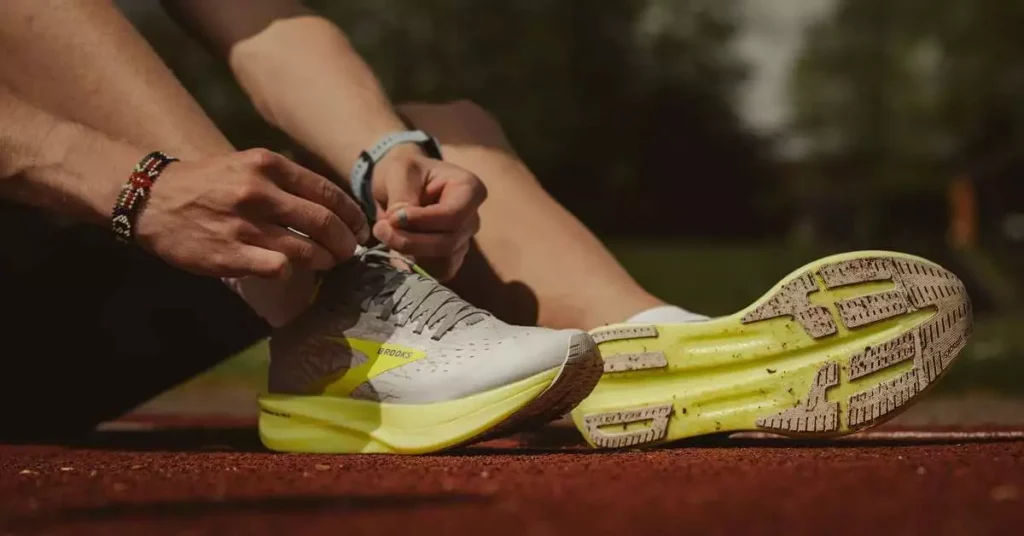
When it comes to running, tennis shoes might not be the first choice that comes to mind. However, tennis shoes can be a great option for running, depending on the type of running you plan on doing.
Tennis shoes are designed with lateral movement in mind, which makes them ideal for sports that require quick side-to-side movements, such as tennis or basketball. They are also designed to provide stability and support, which can be beneficial for runners who need extra support for their feet and ankles.
Tennis shoes are typically heavier and more substantial than running shoes. They are designed to withstand the wear and tear of playing on hard courts or clay courts, which means they are built to last. This durability can be an advantage for runners who need a shoe that can handle the rigors of running on different surfaces.
One of the main differences between tennis shoes and running shoes is the design of the sole. Tennis shoes have a flatter sole with less cushioning than running shoes. This design allows for better traction on the court, but it can also be beneficial for runners who prefer a firmer, more stable sole.
In terms of court surface, tennis shoes are designed to be used on a variety of surfaces, including hard courts and clay courts. This versatility can be beneficial for runners who like to switch up their running surface. However, it’s important to note that tennis shoes may not be the best option for runners who primarily run on pavement or other hard surfaces.
Are Tennis Shoes Good for Running: Design and Material Aspects
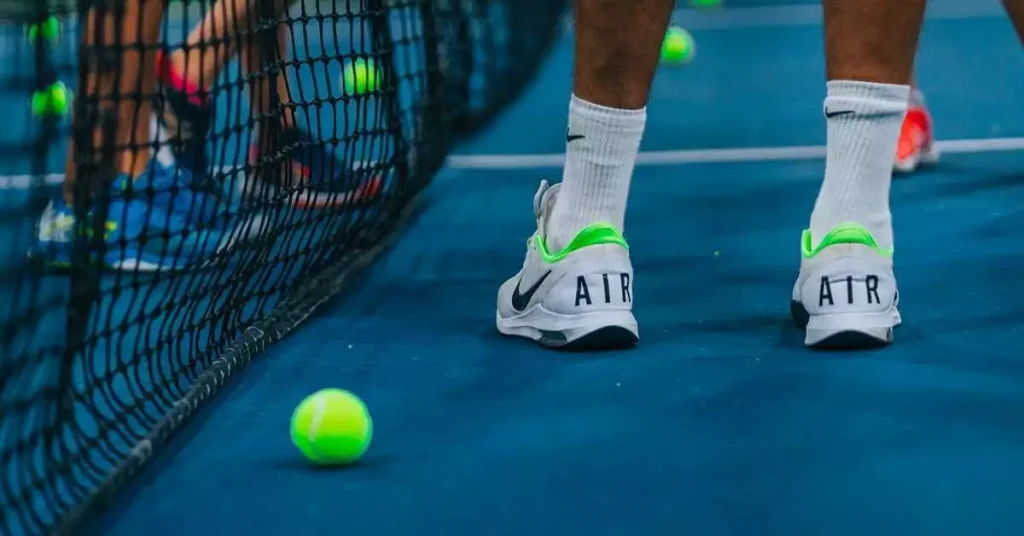
Are tennis shoes good for running? When it comes to running, tennis shoes may not be the best option. However, if you plan to use them for running, it’s essential to understand the design and material aspects that make tennis shoes different from running shoes.
Sole
The sole of a tennis shoe is designed for lateral movement, whereas the sole of a running shoe is designed for forward motion. A tennis shoe’s sole is flatter and wider than that of a running shoe. It is also made of a different material to provide the necessary traction on the court.
Outsole
The outsole of a tennis shoe is typically made of rubber and is designed to provide maximum durability and support on the court. In contrast, the outsole of a running shoe is made of softer rubber or foam to provide cushioning and shock absorption.
Midsole
The midsole of a tennis shoe is designed to provide stability and support during lateral movements. It is typically made of a dense material such as EVA or polyurethane foam. In contrast, the midsole of a running shoe is made of softer foam to provide cushioning and shock absorption.
Upper
The upper of a tennis shoe is typically made of synthetic materials such as leather or mesh. It is designed to provide support and durability during lateral movements. In contrast, the upper of a running shoe is made of breathable mesh to provide ventilation and reduce weight.
Toe Box
The toe box of a tennis shoe is typically reinforced to provide additional protection during lateral movements. In contrast, the toe box of a running shoe is designed to provide ample space for your toes to move freely.
Heel Counter
The heel counter of a tennis shoe is designed to provide stability and support during lateral movements. It is typically made of a dense material such as TPU or thermoplastic polyurethane. In contrast, the heel counter of a running shoe is made of a softer material to provide cushioning and shock absorption.
Materials
The materials used to make tennis shoes are different from those used to make running shoes. Tennis shoes are made of more durable materials to withstand the wear and tear of the court. In contrast, running shoes are made of lighter materials to reduce weight and improve ventilation.
Are Tennis Shoes Good for Running: Comfort and Fit

When it comes to running, comfort and fit are two of the most important factors to consider in your shoes. Tennis shoes and running shoes are designed differently, with different features to accommodate the unique needs of each sport.
Comfort is subjective and varies from person to person. However, comfortable running shoes should offer adequate cushioning and support to help reduce the impact of each stride. Tennis shoes, on the other hand, are designed for quick lateral movements, and may not provide the same level of cushioning and support as running shoes.
Fit is also crucial when it comes to running shoes. A proper fit can help prevent blisters, chafing, and other types of foot pain. Running shoes are typically designed with a wider toe box to allow for natural toe splay, which is important for stability and balance during running. Tennis shoes, on the other hand, may have a narrower toe box to provide more support for lateral movements.
Are tennis shoes good for running? When choosing between tennis shoes and running shoes, it’s important to consider your specific needs and preferences. If you’re a serious runner, investing in a quality pair of running shoes is likely the best choice. Running shoes are designed specifically for the sport and offer the cushioning and support needed to help prevent injuries and improve performance.
However, if you’re a casual runner or just starting out, tennis shoes may be a good option. While they may not offer the same level of support and cushioning as running shoes, they can still provide adequate comfort and protection for shorter runs.
Are Tennis Shoes Good for Running: Support and Stability
When it comes to running, support and stability are two of the most important things to consider in your shoes. Tennis shoes are designed for lateral movements and quick stops, making them less suitable for running than shoes specifically designed for running. However, some tennis shoes may still provide adequate support and stability for running.
Support refers to the amount of cushioning and protection that a shoe provides for your feet. Running shoes typically have more support than tennis shoes, with features like extra padding and shock absorption. This is important for runners, as the repeated impact of running can put a lot of strain on your feet and joints.
Stability, on the other hand, refers to a shoe’s ability to keep your feet in place while you move. Running shoes often have additional stability features, such as a wider base or reinforced midsole, to help prevent your feet from rolling inward or outward. This is especially important for runners who overpronate or supinate, as it can help prevent injuries.
While some tennis shoes may offer support and stability features, they are generally not designed for the specific needs of runners. If you are serious about running, the answer to the question “Are tennis shoes good for running?” is clearly no. It is recommended that you invest in a good pair of running shoes that are designed to provide the support and stability you need.
When shopping for running shoes, look for features like arch support, lateral support, and stability features like a wider base or reinforced midsole. It is also important to choose shoes that fit well and provide a comfortable, secure fit. This will help prevent blisters and other foot injuries, and ensure that you can run comfortably for longer periods of time.
Are Tennis Shoes Good for Running: Cushioning and Shock Absorption
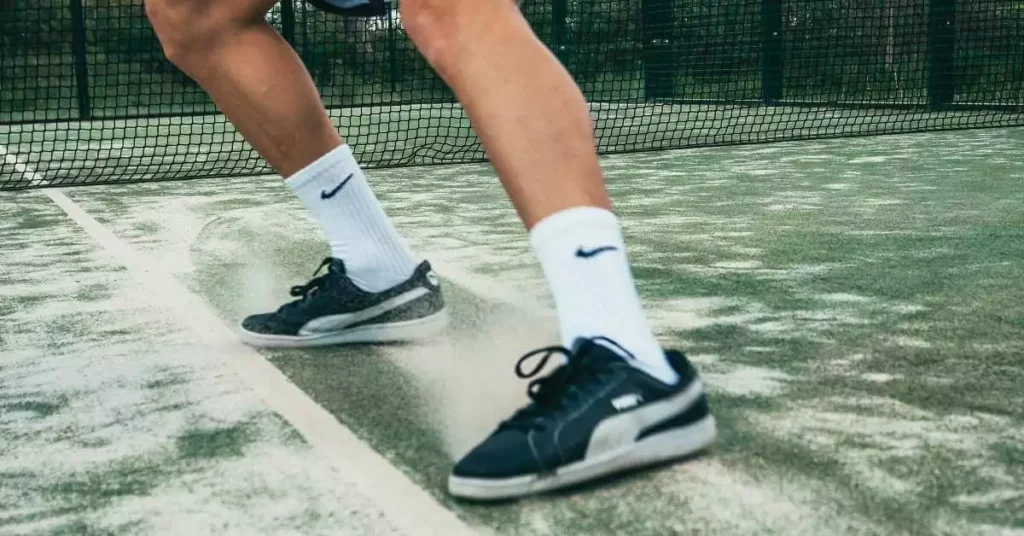
When it comes to running, the cushioning and shock absorption capabilities of your shoes are essential. Tennis shoes are designed to provide enhanced cushioning and shock absorption, which can help minimize the impact on your feet and joints. This is especially important for runners who are prone to injuries or those who run on hard surfaces like concrete.
Most tennis shoes have thicker soles and extra padding in the insole, which helps to absorb the shock of each step and provides a more comfortable running experience. The improved stability and support offered by tennis shoes also contribute to a more efficient and balanced stride, reducing the risk of injury.
It’s worth noting that the cushioning in your shoes will deteriorate over time, especially if you’re a frequent runner. According to a study, after just 50 miles of running, the cushioning in your shoes can deteriorate by 25%. By 150 miles, it can decrease to 33%, and finally down to 45% once it hits the final 500-mile mark. Therefore, it’s important to replace your shoes regularly to ensure that you’re getting the maximum benefit from the cushioning and shock absorption.
Are Tennis Shoes Good for Running: Weight and Flexibility
When it comes to running shoes, weight and flexibility are two important factors to consider. Tennis shoes tend to be heavier than running shoes, which can affect your performance when running long distances. However, the heavyweight of tennis shoes gives the runner a lot of stability, which decreases the injury risk when running.
On the other hand, running shoes are designed to be lightweight, which can make them easier to run in for longer periods of time. The lighter weight of running shoes can also help increase your speed and agility, which is important if you’re training for a race or trying to improve your running performance.
In terms of flexibility, running shoes are designed to allow for a natural range of motion, which can help reduce the risk of injury and improve your overall running form. Tennis shoes, on the other hand, are designed to provide more lateral support and stability, which can be beneficial for tennis players but may not be ideal for runners.
When deciding whether to use tennis shoes for running, it’s important to consider your individual needs and preferences. If you’re just starting out and need extra stability, tennis shoes may be a good option. However, if you’re training for a race or looking to improve your running performance, investing in a pair of lightweight and flexible running shoes may be a better choice.
Are Tennis Shoes Good for Running: Impact on Performance
When it comes to running, the type of shoe you wear can have a significant impact on your performance. While tennis shoes may be comfortable and supportive for playing tennis, they may not be the best option for running. Here are a few ways that wearing tennis shoes for running could impact your performance:
Forward Motion
Running shoes are designed to help you move forward with each stride. They have a specific shape and structure that helps you push off the ground and move forward with ease. Tennis shoes, on the other hand, are designed for lateral movement. They have a flatter sole and less cushioning in the heel, which can make it more difficult to move forward with each stride.
Sprinting
If you plan on sprinting during your run, tennis shoes may not be the best choice. Sprinting requires a lot of power and force, and running shoes are designed to provide the support and stability you need for those quick movements. Tennis shoes may not be able to handle the stress of sprinting and could cause injury or discomfort.
Impact
Running shoes are designed to absorb shock and reduce the impact on your feet and joints. They have extra cushioning in the heel and forefoot to protect your feet from the impact of each stride. Tennis shoes, on the other hand, have less cushioning and may not provide the same level of protection.
Race
If you plan on running a race, it’s important to wear the right shoes. Running shoes are designed to help you perform at your best and can make a big difference in your race time. So, are tennis shoes good for running? They may not be the best option for a race, as they are not designed for the same level of performance.
Are Tennis Shoes Good for Running: Potential Risks and Injuries
When it comes to running, wearing tennis shoes can pose some potential risks and injuries. While tennis shoes may be comfortable and supportive for playing tennis, they may not provide the necessary support and cushioning for running.
Lack of Cushioning
One of the potential risks of wearing tennis shoes for running is the lack of cushioning. Running shoes are designed with extra cushioning to absorb the impact of each stride, which helps to reduce the stress on your joints. Tennis shoes, on the other hand, are designed with a thinner sole and less cushioning, which can increase the risk of injury to your joints.
Increased Risk of Plantar Fasciitis
Another potential injury that can result from wearing tennis shoes for running is plantar fasciitis. This is a common injury that occurs when the plantar fascia, a thick band of tissue that runs along the bottom of your foot, becomes inflamed. Running shoes are designed to provide extra support and cushioning to help prevent this injury, while tennis shoes may not provide enough support to prevent it.
Joint Pain
Wearing tennis shoes for running can also increase the risk of joint pain. Running shoes are designed to provide extra support and cushioning to help reduce the stress on your joints, while tennis shoes may not provide enough support to prevent joint pain.
Lack of Protection
Finally, wearing tennis shoes for running can also result in a lack of protection. Running shoes are designed with extra protection in the form of reinforced material and padding to help protect your feet and toes from injury. Tennis shoes, on the other hand, may not provide enough protection to prevent injuries from rocks, sticks, or other hazards on the road or trail.
Are Tennis Shoes Good for Running: Price Considerations
When it comes to buying tennis shoes for running, price is an important factor to consider. While it may be tempting to go for the cheapest option available, it’s important to keep in mind that investing in a good pair of shoes can make a big difference in your running experience.
Expensive running shoes may not necessarily be worth the price tag, as a study by Greatist found that the most expensive shoes didn’t necessarily perform better than cheaper options. However, it’s still important to invest in a quality pair of shoes that will provide the necessary support and cushioning for your feet.
On the other hand, tennis shoes that are designed for tennis-specific movements may be more expensive than regular running shoes. This is because they are built to withstand the lateral movements and quick stops and starts that are common in tennis. However, if you’re only using them for running, you may not need all of the features that come with a tennis shoe.
It’s important to find a balance between price and quality when selecting a pair of shoes. Consider your budget and the features that are most important to you, such as cushioning, support, and durability. Don’t be afraid to shop around and compare prices to find the best deal.
Below you will find some more frequently asked questions about “Are tennis shoes good for running”.
FAQ
Can you do running with tennis shoes?
In theory, you can run with tennis shoes, but it is not recommended. Tennis shoes are designed for lateral movements, while running shoes are designed for forward motion. Running shoes provide more cushioning and support for the feet, which helps to reduce the risk of injury.
What is the difference between tennis shoes and running shoes?
The main difference between tennis shoes and running shoes is the design. Tennis shoes are designed to provide stability and support for lateral movements, while running shoes are designed to provide cushioning and support for forward motion. Running shoes have more cushioning in the heel and forefoot, while tennis shoes have more support in the midfoot and ankle.
Are tennis shoes good for running and walking?
Tennis shoes are not ideal for walking or running long distances. They are designed for short bursts of lateral movement, not for the repetitive motion of walking or running. If you are planning to walk or run regularly, it is best to invest in a good pair of walking or running shoes that provide the necessary support and cushioning.
What is the benefit of a tennis shoe?
The main benefit of a tennis shoe is that it provides stability and support for lateral movements. This is important for tennis players, who need to move quickly and change direction frequently. Tennis shoes also have a durable sole that can withstand the wear and tear of playing on a hard court.
How long should you wear tennis shoes?
Tennis shoes should be replaced every 45-60 hours of play or every 6 months, whichever comes first. Over time, the cushioning and support in the shoes will break down, which can increase the risk of injury.
Which shoes are better for gym workouts: tennis shoes or running shoes?
Neither tennis shoes nor running shoes are ideal for gym workouts. Gym shoes are designed specifically for weightlifting and other gym activities. They provide a flat, stable base that allows you to lift heavy weights without compromising your balance or stability. If you are planning to do weightlifting or other gym activities, it is best to invest in a good pair of gym shoes.
Are tennis shoes good for running? Share your thoughts and experiences in the comments below. Let’s help each other find the perfect shoes and take our fitness to the next level!

